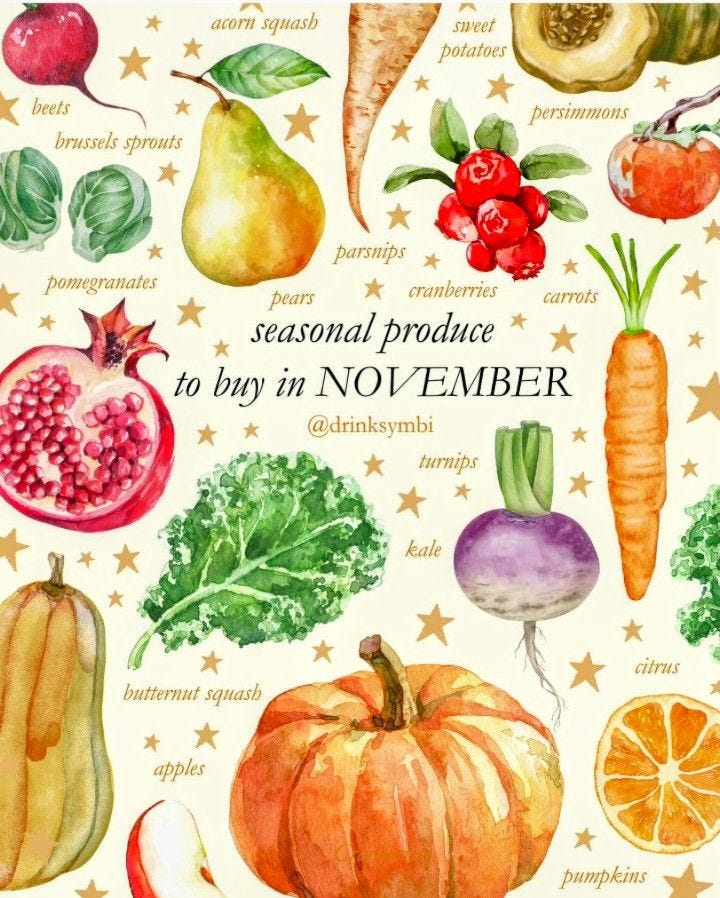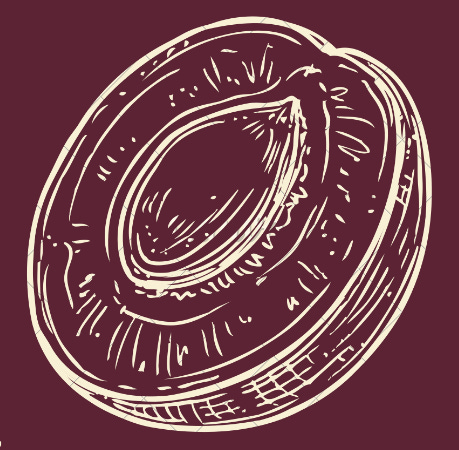how to avoid the winter blues
we're not crumbling with shorter days & colder weather this year
As the sun begins to clock out earlier and earlier each day, so does my will to do anything but curl under a blanket and scroll.
Each November it always comes as a surprise, as if the planet hasn’t been tilting the same way for all of it’s existence, the seasons changing for all of my existence. Still, it hits each year. The clocks change, the light fades, and suddenly existence feels like wading through cold molasses.
It’s a particular type of tired that settles itself during this time of year. You wake up in the dim, work through the gray, and by evening the world is already closing in. The light disappears so early it feels personal, like you’ve been quietly abandoned. Everything feels slightly out of sync. Not complete exhuastion exactly, but rather a dulling — as if forgetting how and what it feels like to be alive in your own body.
The offical diagnosis is Seasonal Affective Disorder (SAD), an ironic acronym for the heaviness that arrives when the sun seems to forget us. Though I don’t think we need to get that clinical to understand the progressive wearing and unraveling that comes with the winter season. It’s like a biological grieving over the loss of light and warmth.
what SAD actually is
What’s happening beneath the surface is deceptively simple. Our bodies run on light more than we’d like to admit. When daylight fades, serotonin levels drop, melatonin surges, and the internal clock that governs sleep and mood begins to stutter. Essentially, it’s biology misfiring in a modern world that refuses to slow down.
If you think about it, biologically, we’re wired for rhytm— much like some animal hibernate. Pre-industrial life moved in cycles of activity and rest, work and stillness, all guided by the sun. Winter was an off-season, a time when agriculture and hunting slowed and people lived in closer sync with the dark. It was a natural “hibernation” phase. As industry boomed, that rhythm was lost. The lights stayed on. The hours stayed long. Our lives became more atuned to steady, year-round work. Instead of hibernation, we push through—the same hours, the same screens, the same expectations. The body begs for stillness while the calendar demands momentum. Eventually, something gives.
In a way, the mood changes correlated with the season changes are about dissonance. The mismatch between what our biology remembers and what our lives require.
the SAD prevention toolkit
There’s no real cure for the heaviness that comes with winter, just small things that make the days a little less sharp around the edges. The light will go. The cold will come. But I’ve found there are ways to meet the season without collapsing under it.
- soak up some sun
Light is one of the biggest mood regulators we have. When daylight gets shorter, serotonin drops and melatonin kicks in earlier—which is why everything starts to feel heavy and slow. While being outside in the morning is ideal, sometimes that is just not feasible with chilly temperatures and undesirable weather. Don’t let that stop you from getting some sun exposure. Stand by the window while the kettle boils. Sit where the sun lands in your apartment. Light is so important for your circadian rhythm & can make such a difference in your mood.
- let fresh air in
Even if you’re not going outside, open your windows for 10–20 minutes. The air indoors gets stale fast in the winter, especially with heat running. Fresh air helps wake up your brain. It is even better to get outside for a quick walk around the block. The movement + fresh air can be incredibly refreshing during months we’re stuck inside. Layer up and head out the door.
- movement
Movement increases blood flow to the brain, releases endorphins, and helps regulate cortisol levels (all of which directly affect mood and energy). You can join the “lock in” and use the winter months to train hard in the gym or commit to a yoga flow at home routine. There is no right or wrong form. Pace around the room while on a call, walk around the block when you have a break, stretch when you wake up and before bed. It only matters that your body doesn’t spend the entire day in one position. (Plus building a good routine can be beneficial mentally too)

- warm, nourishing meals
Warm, nutrient-dense foods support your system & immunity and stabilize blood sugar, which helps prevent mood crashes and that wired-then-exhausted cycle. Adding color (greens, oranges, reds) ensures a mix of vitamins and minerals that support energy production and neurotransmitter function. Set yourself up with meals you don’t have to think about too hard. Some of my go-tos are:
soup (butternut squash & ginger, classic chicken noodle, borscht, matzo ball)
honey-glazed carrots
slow-cooker meals!! (beef stew, chili)
kale pomegranate salad
goulash
porridge with stewed apples
chicken paprikash
- build a winter media stack
When energy dips, decision-making becomes harder. That’s when scrolling fills the gap. Make a list now of shows, books, movies, and playlists to make the decsion easier and you have things to look forward. It’s like a winter bucket list of media. Plan out the christmas movies you want to watch this year. Pick books to read for next year.
- spend time in public spaces
Your nervous system regulates itself in response to other human even without interaction. Isolation can make SAD symptoms heavier because your world quietly shrinks. Being in shared space (the library, a hot pilates class, a coffee shop, the mall, the gym) keeps you tethered to the living world.
- rest more (without guilt)
Your body genuinely needs more sleep in the winter. Your circadian rhythm is shifting in response to the environment. Historically, winter was a season of reduced activity, conservation, and longer sleep cycles. Our bodies still expect that. If you can, allow yourself: earlier nights, waking slowly when possible, a short afternoon rest when your energy genuinely dips. Match the season your body is in.
- notice what this season offers
Our mindset doesn’t cure the heaviness, but it does shape the way we move through it. There are things winter gives that no other season does. Did you know winter sunrises and sunsets actually tend to look more vivid because the cold air holds less moisture and fewer particles. That means the light scatters differently, letting those deep pinks, purples, and reds show up more clearly. So when you step outside and the sky looks like it’s been smeared with watercolors that’s winter showing off.
Some other things I admire in winter: Smoke rising from chimneys in the morning.
Frost patterns on windows. The way snow glimmers in the sun.
This time of year has a way of narrowing the world. Winter is not dramatic for everyone, but for some, it settles deep in the bones. It can be hard. Harder to get out of bed, less excitement about things you usually love, a sense of grayness to match the sky.
The season is allowed to feel heavier. You are allowed to move slower. Winter asks us to slow down. To take care of ourselves in ways that are less shiny and more steady.
The light returns slowly, minute by minute, and so will you. In the meantime, choose warmth where you can find it. Let yourself rest. Fill your days with tiny things that remind you you’re alive and here and deserving of softness.
you can also follow plum pits on instagram





I genuinely needed this. Thank you.
In the past, I've had a hard time when outside turns dark and cold as a feeling of dread kicks in. I've been more mindful of shifting my mindset and habits to serve me in this season. Your words are the perfect remedy of initiative, grace, and validation. Thank you for sharing!!